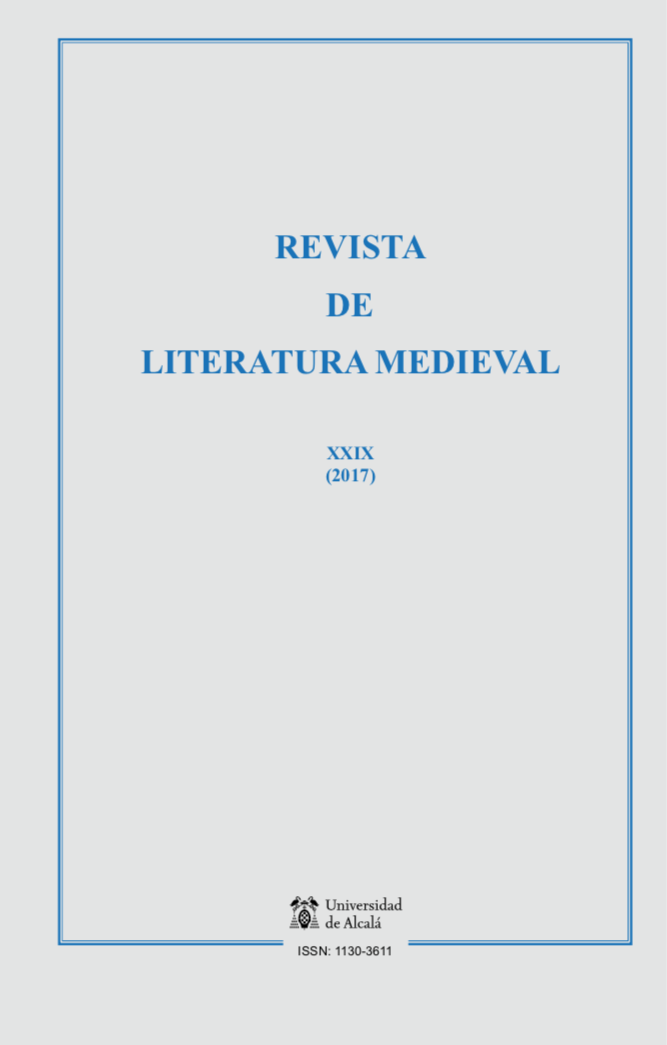«A morte en feminino na lírica galego-portuguesa: o Pranto por Beatriz de Suabia»
DOI:
https://doi.org/10.37536/RLM.2017.29.0.69394Abstract
Resume: A morte «real» da dama no corpus da lírica trobadoresca non é un tema habitual. Pero da Ponte, un autor innovador e renovador da tradición poética, compón o «único» pranto feminino conservado na lírica galego-portuguesa, Nosso Senhor Deus! Que prol vus ten ora. No artigo estudarase este lamento que deplora a morte de Beatriz de Suabia. Atenderase á contextualización da cantiga na tipoloxía elexíaca, ao personaxe da raíña, e á análise do texto. A arquitectura deste pranto segue o paradigma do planh occitano e, ademais, revela que a sombra de Alfonso X está presente na súa articulación.
Palabras clave: Mulleres, Edad Media, pranto, morte, lírica galego-portuguesa.
Abstract: The «real» death of the lady is not a common topic in the troubadoresque lyric poetry. Pero da Ponte, an innovative and reformist author of the lyric tradition, writes the «only» female lament conserved in Galician-Portuguese school, Nosso Senhor Deus! Que prol vus ten ora. This paper will study this compostition, which deplores the death of Beatrice of Swabia. It will analyse the contextualization in the elegiac tipology, the character of the queen, and the analysis of the text. The structure of the lament the model of the Occitan planh and reveals that the shadow of Alfonso X is present in the text.
Keywords: Women, Middle Ages, Lament, Death, Galician-Portuguese lyric poetry.
Downloads
Métricas alternativas
Downloads
Published
How to Cite
Issue
Section
License
The opinions and facts stated in each article are the exclusive responsability of the authors. The University of Alcalá is not responsible in any case for the credibility and aunthenticity of the studies.
Authors will retain the rights on their work, even if they will be granting the journal a non-exclusive right of use to reproduce, edit, distribute, publicly communicate and show their work. Therefore, authors are free to enter into additional, independent contracts for non-exclusive distribution of the works published in this journal (such as uploading them to an institutional repository or publishing them in a book), as long as the fact that the manuscripts were first published in this journal is acknowledged.
Works are published under the terms stipulated in the Attribution-NonCommercial-ShareAlike 4.0 International License (CC BY-NC-SA 4.0) that allows third parties to share the work under the following conditions:
Attribution — You must give appropriate credit, provide a link to the license, and indicate if changes were made. You may do so in any reasonable manner, but not in any way that suggests the licensor endorses you or your use.
NonCommercial — You may not use the material for commercial purposes.
ShareAlike — If you remix, transform, or build upon the material, you must distribute your contributions under the same license as the original.









